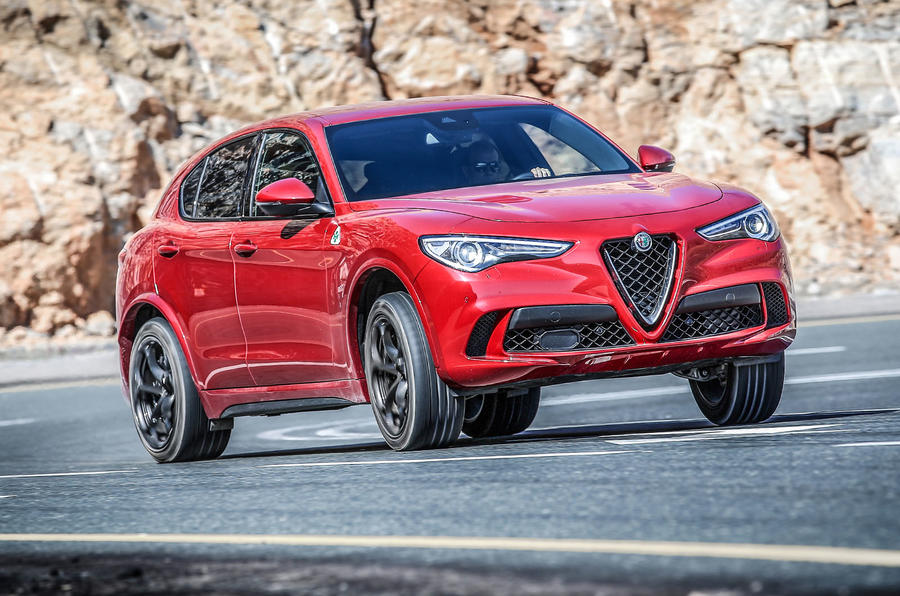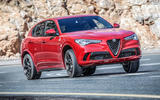What is it?
According to its maker, the Alfa Romeo Stelvio Quadrifoglio is the fastest production SUV you can buy.
That’s a tricky claim to verify, though, because there are so many different ways to interpret that slippery F-word. There are SUVs that better 503bhp Stelvio’s 3.8sec 0-62mph time, after all, and SUVs that shade its 176mph top speed.
What Alfa Romeo bases that somewhat bold claim on, then, is the Stelvio QV’s eye-opening 7min 51.7sec Nürburgring lap time, which is an SUV record. It wasn’t all that long ago that dedicated sports cars were recording seven-fifty-something laps around the Nordschleife. No matter how tired you are of hearing such lap times being flung back and forth, it cannot be denied that a sub-eight minute lap around that place is extremely fast for a high-riding 4x4.
Designed and developed by the same team that brought us the rather wonderful Giulia Quadrifoglio sports saloon, the high-performance Stelvio is dripping with genuine sports car hardware. Its 2.9-litre twin-turbocharged V6 and eight-speed automatic gearbox are borrowed from the Giulia QV - with specific calibration and ratios - but here drive is sent to the road by Alfa Romeo’s Q4 four-wheel drive system.
In normal driving, 100% of torque is sent to the rear wheels. Only when they begin to slip is drive shunted forwards, and even then, no more than 50% can be sent to the front axle.
The rear differential incorporates a pair of clutch packs that split torque between the rear wheels. This active torque vectoring makes the Stelvio more nimble, Alfa reckons. The car is suspended by double wishbones at the front and a multi-link set-up at the rear, with adaptive damping.
The engine is mounted mostly behind the front axle line to aid weight distribution, while the use of carbonfibre and aluminium panels keeps weight to a minimum. Even so, at 1830kg, the Stelvio Quadrifoglio is no featherweight.
There are various drive modes, including an Eco mode that reduces fuel consumption by shutting off three of the engine's cylinders - although this can also happen in Normal mode - and a Dynamic mode that sharpens the throttle response, reduces gearshift times, tightens up the dampers and adds weight to the steering. Race mode turns everything up another notch while standing down the stability control system. It's possible to switch the dampers back into an intermediate setting within Race mode.






































Join the debate
Add your comment
Where have the old 1.6 twin-cam alfas gone?
Try as I might, I cannot shake that silly hankering for the old 1.6 twin-cam engine that pushed Giulettas a long in my youth; even the boxer in the AlfaSud was flat (no pun!) by comparison... Never mind!
Really can't take the reviews
Marc wrote:
Funny you say that really because the same is true of VAG products reviewed on here and the number of reviews......
Nurburgring lap time cheating
The Stelvio that went round the Nurburgring was far from standard; and not at all what you cna buy at your retailer.
For a start the rollcage that your dealer can't supply would have added a level of stiffness and body rigidity that you can't get otherwise.
And then there's the deletion of the rear seats and other weight-saving measures you wouldn't want.
And the tyres were specials
etc., etc.
"And then there's the
"And then there's the deletion of the rear seats and other weight-saving measures you wouldn't want."
no there isnt